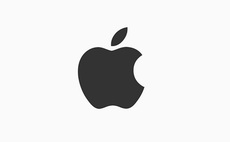The lines between computing platforms are becoming more blurred with each generation, as mobile software and hardware becomes more capable. Then there's the 2-in-1 hybrid devices that defy these categories altogether.
It's a trend borne off the back of the computing power mobile devices can now bring to bear. The advances in Qualcomm's and Apple's SoCs, in terms of processor speeds and core count, and accompanying storage and RAM capacities, mean these devices are more than capable of running many of the business applications that have traditionally been hosted on enterprise desktop devices.
In the most recent Google Android and Apple keynotes, both leading mobile players revealed their cross-platform integration plans - including proximity-based switching of workflows from iOS to macOS, and vice versa. It's a response to the fact that we're constantly switching devices, whether we're at work, home, or on the move, and we desire a seamless experience when doing so.
Google's upcoming Android Q will bring native desktop support, meaning your smartphone can become your desktop too, simply by docking it to a monitor and other peripherals - something Samsung Dex has been doing since 2017. Meanwhile, Chrome OS now has native support for Android apps.
What about the enterprise?
The consumer space is quickly moving towards a mature multiplatform ecosystem but the enterprise space is being left behind. Many of the critical applications underpinning businesses don't run on macOS or Windows 10, never mind iOS or Android.
There's a real need for the enterprise to catch up with what's happening elsewhere, or end-users will quickly become frustrated and productivity hampered. The millennials that make up a large proportion of today's workforces expect higher standards from their workplace technology. While the BYOD revolution hasn't quite materialised in the way many expected, the shift towards mobility absolutely has - making multi-platform capabilities a must.
However, there is a colossal amount of development work involved in cross-compatibility and building an application that extends across the big providers, Microsoft, Apple and Google, is fraught with complications.
The alternative
Containerisation offers a solution to this by leveraging the cross-platform standardisation offered by the modern browser. A browser-based container, containing a light-weight OS, has the potential to be hardware and OS-agnostic. So long as the install size and computing resource demands are reasonable and deployment methods, such as installation and management processes, familiar to IT estate managers, the approach has huge potential in the enterprise.
It's an approach taken by desktop-based containerisation company Droplet Computing. Their container technology currently supports Windows, macOS and Linux, but there's huge potential in extending this to mobile operating systems too.
There's scope to deploy a container, with an OS running an app developed for Windows XP, onto a Samsung smartphone (or any other device) and then doc that device to a monitor via Samsung Dex. A piece of software that was past end-of-life is now secure (thanks to the container), and multi-platform, providing a consistent user experience across devices.
We've previous reported on how Droplet Computing's innovative semi-connected container technology is overcoming some of VDI's connectivity requirements, through the ability to run both online and offline, as well as how browser-based containerisation is redefining legacy application delivery.
However, given the ease of deployment and flexibility of the approach, it isn't limited purely to these use cases. Droplet Computing told Computing how they are constantly faced with new scenarios, when visiting clients, in which the technology could meet a unique business need.
At a time when many IT departments are scrambling to update to Windows 10, the fact that applications can be deployed on these devices in a container, without compatibility fears, is of enormous significance - it's what has held many organisations back from updating in the first place.
Desktop-based containerisation is able to lean on the benefits of cloud computing in the same way as VDI, without its connectivity and cost connotations, while it simultaneously leverages the enduring, multifarious nature of end devices.
In the multi-platform era, flexible, cost-effective and secure application deployment will be key to successful IT estate management. Droplet Computing may well have found the answer.




















